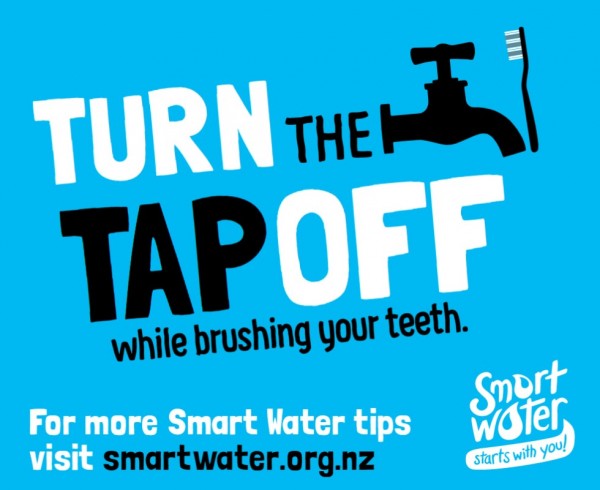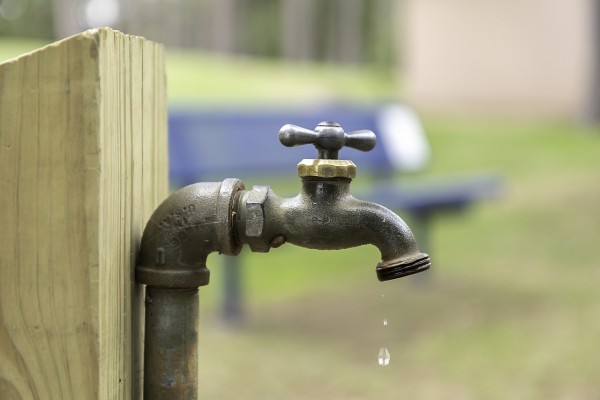REDUCE
- Showering uses the most water in your home. Reduce your shower time and every minute saved is enough drinking water for 6 people a day. To help keep track of time, try using a shower timer. Visit your council reception (Hamilton, Waipā District & Waitomo District only) & ask for your free shower timer to make this easier.
- Turn the tap off while brushing teeth.
- Always use the correct dual flush button on your toilet (half-flush for liquid waste and a full-flush for solid waste).
- Hold off washing dishing and laundry until you have a full load.
- Use the ‘Eco’ or ‘Economy’ setting on your dishwasher and washing machine – this will use less water and energy.
- Fill the kettle only with what you need - this saves water and electricity.
- Plan for fewer and longer watering sessions. These are more effective than lots of small, short sessions and encourage root systems to grow deeper into the soil. Every 3 – 5 days that pass without rain is enough.
- Always use a pool cover to prevent 97% of water evaporating, reducing the need to top-up your pool.
- Don't overfill the pool. Lower water levels will reduce water loss due to splashing.


REPAIR
- Check your toilet cistern doesn't leak. Toilet leaks are often silent. A continuously running toilet can waste more than 700 litres of water a day and is not something you can ignore.
- A leaky tap loses on average 65 litres a day - the equivalent of running your dishwasher five times! Changing the rubber seal will fix the problem.
- Check your swimming pool for leaks as part of your regular maintenance routine. Find out what to look for here.
- If you have a water meter, it is worth doing a water meter leak check to make sure you don’t have any hidden leaks.

REPLACE
- When shopping for a new toilet, dishwasher, washing machine, shower or tap, use the water efficiency labelling scheme (WELS) to help you choose. Just remember, the more stars on the WELS label, the more water efficient the appliance is.
- Plan for groundcover plants to eventually replace the need for mulch. As groundcover grows, it will start to spread and suppress weeds, retain soil moisture, insulate the soil and keep plant roots cool.
- When planning or revamping your outdoor landscape, consider using materials that allow rain to soak into your soil and garden. Crushed shells, pebbles, gravels, permeable pavers and mulch are good materials to use and can help reduce flooding and pooling during heavy rainfall.
- When purchasing a replacement pool filter, look for a water efficient model. An energy efficient pump can also significantly save on energy costs.
- Drip line irrigation and soaker hoses are two of the best ways to water shrubs, plants and vegetables. Water is directed straight to the root zone unlike a sprinkler that can waste a lot of water to evaporation and runoff.
- Placing trees and shrubs strategically can give your pool protection from wind, helping to reduce evaporation. Consider planting or constructing windbreaks in any direction where your pool is exposed to strong winds.
RETROFIT
- Consider installing a low flow shower head. Their clever design gives you the feel of a normal shower but can significantly reduce the amount of water used.
- Use eco-friendly products and then you can reuse your bath water on your house plants or garden.
- Stand a full 2 litre plastic soft drink bottle in your cistern to save water every time you flush. This can achieve savings of up to 5,000 litres per year.
- Consider installing a toilet weight flush limiter if your toilet is pre-2005. This simple gadget gives you control of how much water is used each flush. Contact us and we will send you one in the post*.
- Slow the flow! Consider installing aerators or flow restrictors on your sink taps - you'll save water without even noticing.
- Install a rainwater tank to collect water for use in your pool, garden or home. If rain is forecast, wait for the pool to refill naturally.
- When retrofitting or building a swimming pool think about investing in a good fitting pool cover. The average in-ground pool in New Zealand loses 160 litres a day due to evaporation. That’s the same as leaving the shower on with nobody in it for 13 minutes.
*Hamilton City, Waipā District & Waitomo District residents only.
RE-USE
- Instead of watching the shower warm up, keep a bucket in the shower to catch the water and re-use in your garden. Your vegetables and herbs will thank you for it.
- Use eco-friendly products and then re-use your bath water on your house plants or garden.
- When washing fruit and veggies, use a small bowl instead of a running tap. Then you can also reuse that water on your pot plants!
- Don't tip left-over water down the sink - give your pot plants a drink!
- When soaking clothes, use a bucket instead of the tub so you can chuck it on a plant that needs some love.
- Reduce your consumption of treated water by topping up your pool or spa with water from a rainwater tank or downpipe diverter.
- Collecting rainwater from your roof and storing it in a water tank/rain barrel is a great source of water for your garden without having to use treated water. Even a 220-litre barrel for watering the garden can significantly reduce the amount of treated water you use.
Find out more about rainwater harvesting here
Want to know more? Click here for in-depth water saving tips